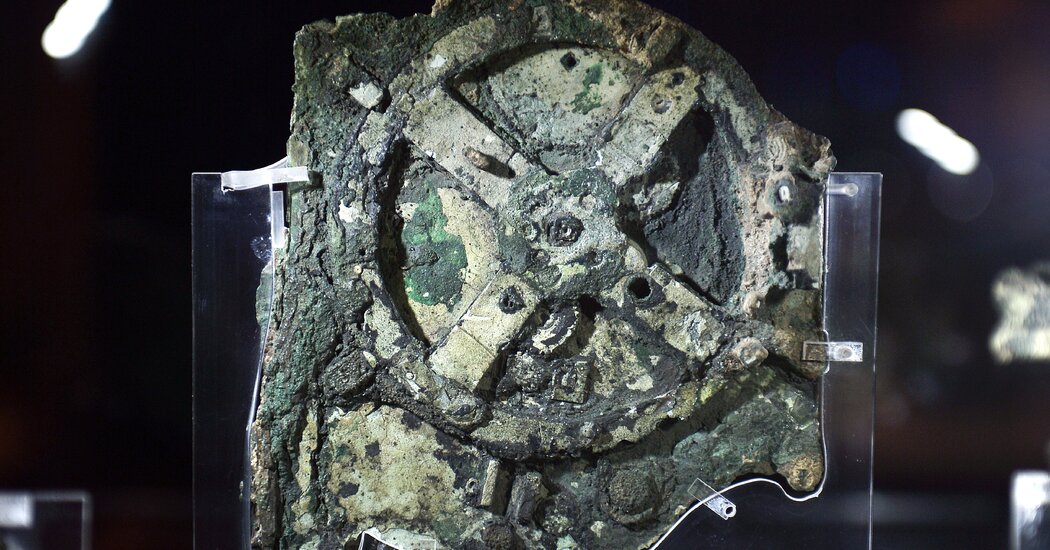Scientists used techniques from the field of gravitational wave astronomy to argue that the Antikythera mechanism contained a lunar calendar.
The Antikythera mechanism, an ingenious calculator made 2,200 years ago, has inspired awe and enchantment ever since it was recovered from a shipwreck near a Greek island in 1901. Generations of researchers have unraveled many mysteries about the device, which is often described as the world’s first analog computer, though much remains unknown.
A study published this month in The Horological Journal challenges a core assumption about the mechanism that could upend understanding of the complex timepiece’s form and function. But rather than using standard tools of archaeology, the scientists reached their conclusions by drawing from the methods of gravitational wave astronomy, a field that tunes into subtle ripples in space-time that result from cosmic disruptions.
Graham Woan, a professor of astrophysics at the University of Glasgow, and Joseph Bayley, a research associate there, said that the mechanism’s calendar ring, a circular feature that survived only in fragments, had once contained 354 holes, which corresponds to a lunar calendar of 354 days. That result conflicts with earlier research that identified the ring as a solar calendar, lined with 365 holes.
“It’s a slightly contentious idea,” said Dr. Woan, who acknowledged that he and Dr. Bayley are not experts on the device. “However, the evidence is rather clear.”
If the calendar ring does represent a lunar year, it would invalidate current models of the mechanism. For that reason, some Antikythera scholars remain skeptical of the new study.
“It’s just wrong,” said Tony Freeth, an honorary professor at University College London and an expert on the Antikythera mechanism. He noted that there was already a much more precise lunar calendar, based on the 19-year Metonic cycle, embedded in the machinery.
